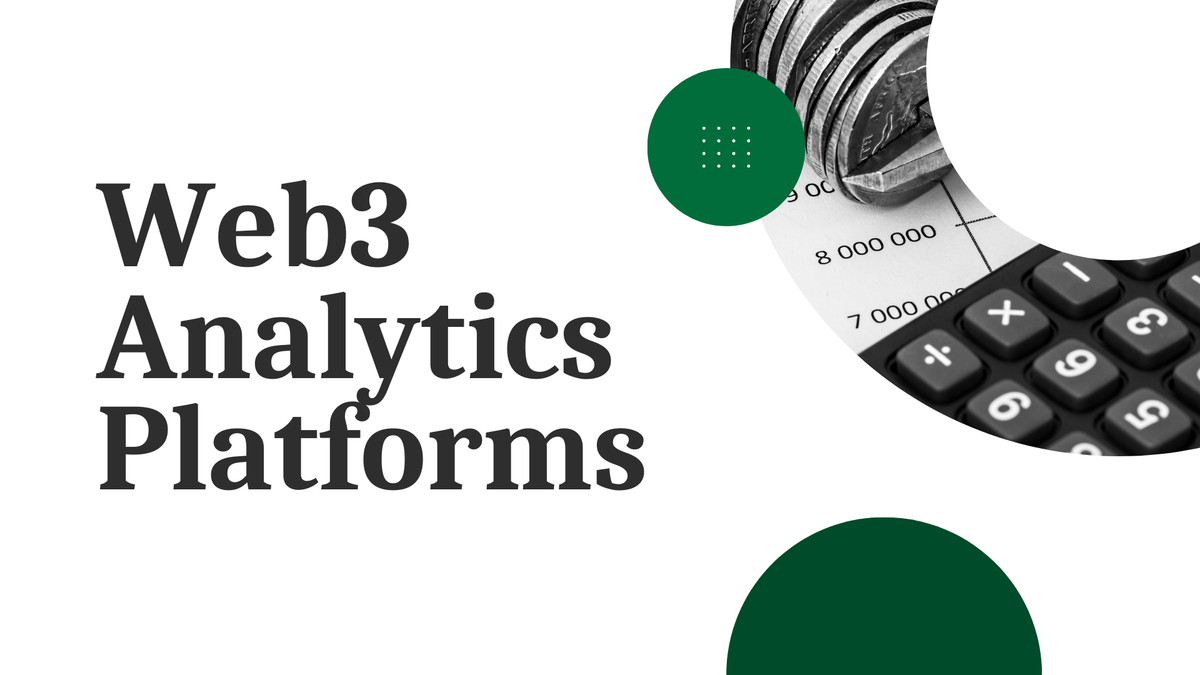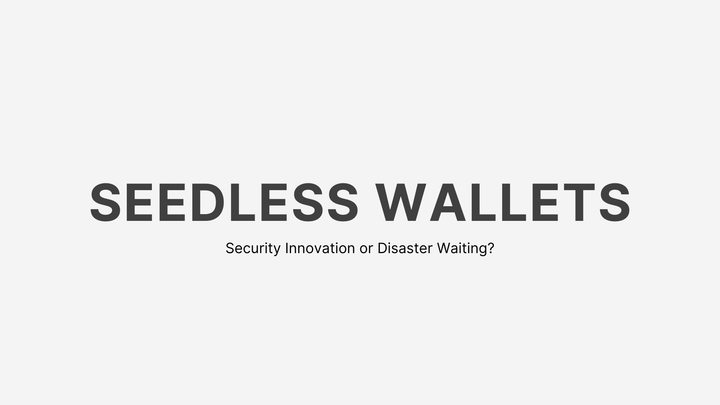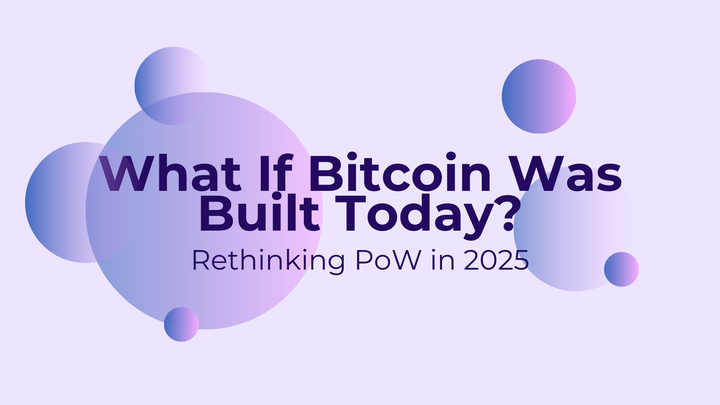Web3 Analytics Platforms

Introduction: The Rise of Web3 and Analytics Needs
Web3 Analytics Platforms are specialized tools designed to collect, analyze, and interpret data from decentralized applications (dApps) and blockchain networks, addressing the unique challenges of a distributed data environment.
Defining Web3 Analytics Platforms
Web3 Analytics Platforms are distinct from traditional analytics tools, which rely on centralized databases, by focusing on the distributed nature of blockchain data. These platforms offer functionalities such as real-time monitoring of on-chain activities (e.g., transactions, smart contract interactions, token transfers) and integration of off-chain data (e.g., user behavior, market trends) to provide a holistic view. They are essential for understanding decentralized ecosystems beyond traditional metrics like website traffic.
Examples of such platforms include:
- Dune Analytics Dune Analytics: Allows users to create custom queries and dashboards for blockchain data.
- Nansen Nansen: Provides in-depth insights into crypto markets and on-chain activities.
- Flipside Crypto Flipside Crypto: Offers data and analytics tailored for the crypto community.
- AnalyticKit AnalyticKit Web3 Analytics: Focuses on Web3 analytics beyond the hype.
- Moonblocks Analytics Moonblocks Beyond Data: Specializes in Web3 insights with analytics tools.
- CryptoQuant CryptoQuant On-chain Analytics: Specializes in on-chain analytics for cryptocurrencies.
- Covalent Covalent Web3 Data API: Provides a Web3 data API for accessing blockchain data.
- Etherscan Etherscan Ethereum Explorer: A blockchain explorer for Ethereum with analytics features.
- DEX Screener Dexscreener.com: For decentralized exchange analytics.
- DefiLlama Defillama.com: Tracks DeFi protocols and their TVL.
These platforms offer a range of functionalities, from real-time data tracking to advanced analytics, catering to different needs within the Web3 ecosystem.
Data Tracking: On-Chain and Off-Chain Dynamics
Data tracking is a cornerstone of Web3 Analytics Platforms, enabling comprehensive analysis of both on-chain and off-chain data. On-chain data, recorded directly on the blockchain, includes transactions, smart contract events, token transfers, and consensus data, offering transparency and historical insights. Off-chain data, not directly on the blockchain, encompasses user demographics, engagement patterns, and external market data, providing enriched context for user experience optimization.
Real-time data tracking is vital for timely decision-making, such as adjusting tokenomics or responding to market shifts, while historical data supports trend identification and strategic planning. Key metrics tracked include Daily Active Users (DAU), retention rates, transaction volumes, gas fees, and token velocity, which provide insights into dApp health and growth. Use cases span various industries:
- NFTs: Tracking trading volumes, ownership distribution, and market sentiment to inform creators and collectors.
- DeFi: Monitoring liquidity pools, yield farming, and protocol usage for financial strategy optimization.
- Gaming: Analyzing player behavior to optimize in-game economies and enhance user experiences.
- Supply Chain: Ensuring traceability and authenticity through blockchain's transparent ledger.
Privacy in Web3 Analytics: Balancing Transparency and Confidentiality
Privacy is a critical concern in Web3, given the public and transparent nature of blockchain data. While transactions are pseudonymous (linked to wallet addresses), advanced analytics can deanonymize users, posing risks to confidentiality. Web3 Analytics Platforms address these challenges through various techniques:
- Anonymization and Aggregation: Sensitive data is anonymized or aggregated to prevent individual identification.
- Decentralized Identifiers (DIDs): Allow users to control digital identities without centralized authorities.
- Zero-Knowledge Proofs (ZKPs): Enable verification without revealing underlying data.
- Encryption: Ensures only authorized parties access sensitive information.
Compliance with privacy regulations like the General Data Protection Regulation (GDPR) and the California Consumer Privacy Act (CCPA) is essential, ensuring responsible data handling and user consent respect. Challenges include the public visibility of on-chain data and risks of deanonymization, requiring robust security measures like encryption and authentication to prevent unauthorized access.
Specific privacy challenges in Web3 include:
- Data Monitoring Obligations: Web3 protocols ideally don't collect user data, but if they do, it's stored on public blockchains, making compliance with regulations like Know Your Customer (KYC) and Anti-Money Laundering (AML) difficult. Anyone can access sensitive information, increasing exposure to malicious actors.
- Upholding User’s Choice to “Opt Out”: Web3 transactions are automatically verified and recorded on blockchains, leaving no entity to control data collection for opt-out compliance, conflicting with regulatory demands.
- “Destroying” User Data: Blockchains are irreversible, making data deletion impossible, as regulators demand, though users can control access via private keys.
- Decentralized Responsibility: In a trustless ecosystem, no single entity ensures privacy, placing the burden on users, with over 167 major attacks in 2022 draining $3.6 billion, and 74 incidents posing long-term data breach risks (47.4% more than 2021).
- Regulatory Compliance: Need to comply with GDPR and Financial Action Task Force (FATF) recommendations, but Web3’s structure (no central data owner) conflicts with these regulations, requiring collaboration for growth and adoption.
Solutions include building decentralized threat monitoring systems using AI, improving web3 primitives like ZKPs, and fostering collaboration between developers, innovators, and policymakers to balance web3 fundamentals with privacy demands.
Decentralized Insights: Unlocking Value in Blockchain Ecosystems
The true value of Web3 Analytics Platforms lies in providing decentralized insights, offering unparalleled visibility into market dynamics, customer behaviors, and dApp performance. These platforms analyze on-chain data to reveal patterns in user engagement, such as popular dApp features, smart contract interactions, and token adoption drivers. Economic activities like token velocity and liquidity are monitored, with predictive analytics powered by AI and machine learning forecasting future trends.
Key metrics include:

Benefits include:
- Competitive Advantage: Early detection of market trends for first-mover advantages.
- Customer Insights: Deep understanding of community-driven product development.
- Operational Optimization: Data-backed decisions for dApp performance.
- Security Enhancements: Fraud detection and secure smart contract management.
Future trends include enhanced decentralized data aggregation, privacy-preserving analytics with ZKPs, AI/ML integration, cross-chain analytics, and user-centric metrics, further enhancing platform capabilities.
Challenges and Considerations
Despite their benefits, Web3 Analytics Platforms face several challenges:
- Data Interoperability: Integrating data across multiple blockchains is complex, with emerging cross-chain solutions addressing this issue.
- Privacy vs. Transparency: Balancing transparency with user privacy requires careful design.
- Skill Requirements: Specialized knowledge of blockchain and data analysis is often needed.
- Tool Fragmentation: Many specialized tools can lead to data silos if not integrated properly.
Case Studies: Real-World Applications
- Near Foundation: Datrics developed end-to-end analytics integrating web and on-chain data, presented through customizable dashboards, enabling identification of successful projects and strategy selection.
- Yanda: Datrics automated trading tools with ML solutions for data-driven insights, enabling quicker, more accurate, and profitable decision-making with fast implementation.
Conclusion
Web3 Analytics Platforms are indispensable for navigating and succeeding in the decentralized web. By providing comprehensive data tracking, ensuring privacy, and offering decentralized insights, they empower stakeholders to make informed decisions, optimize operations, and innovate. With the ecosystem evolving, future trends like AI integration and cross-chain analytics will further enhance their capabilities, shaping a more open, transparent, and user-centric internet.
References
- TokenMinds Web3 Data Analytics Essential Tool
- AnalyticKit Web3 Analytics Beyond Hype
- Moonblocks Beyond Data Web3 Insights
- BeInCrypto Top Web3 Privacy Challenges
- Datrics Web3 Analytics Challenges Use Cases
- ColdChain Agency Web3 Marketing Analytics
- Dune Analytics Dashboards
- Nansen Portfolio
- Flipside Crypto Analytics
- AnalyticKit Product Page
- Moonblocks Analytics Tool
- CryptoQuant On-chain Analytics
- Covalent Web3 Data API
- Etherscan Ethereum Explorer
- DEX Screener Realtime Charts
- DefiLlama DeFi Dashboard
MITOSIS official links:
GLOSSARY
Mitosis University
WEBSITE
X (Formerly Twitter)
DISCORD
DOCS



Comments ()